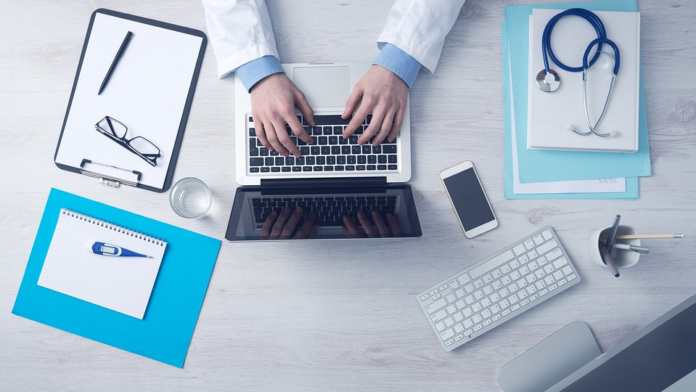People often confuse EMR, PHR, PP, and EHR software solutions, since the concepts they represent already have a lot in common: all of the solutions were designed to digitally store health-related data. Although an EMR, EHR, PP, and PHR are very similar in practice, there are some differences in their functions and purposes.
In this article, we are going to go through the key distinctions between these solutions so that you can decide which one is right for you.
What Is an EMR System and What Advantages Does it Have?
Electronic medical records (EMRs) are electronic versions of patients’ medical histories at a particular medical establishment. The system stores information regarding a specific medical area (for example, dentistry), the custodian is a clinic or a practitioner.
Among EMR system essential features are accessibility, security features, document management, billing, document sharing within the organization, document storage, scheduling and appointment management, communicative tools, voice recognition, etc.
How can you benefit from implementing an EMR System?
– Practitioners get a clear picture of their patient’s health.
– Patient-doctor interaction is improved.
– Physicians can collect data over time and determine whether individuals require medical attention.
– Quick access results in the effectiveness of preventive measures and successful chronic disease control.
In terms of disadvantages, it is worth noting that EMR doesn’t enable interoperability or information sharing. What is more, the EMR system is likely to become outdated in the near future.
Perks and Drawbacks of Using an Electronic Health Record
If you are in search of a more comprehensive solution compared to the EMR system, you can opt for the Electronic Health Record system.
EHR stores information regarding all medical conditions of the patient. This information includes demographics, medications, treatment plans, previous medical history, test results, vaccinations, etc.
The ERR system is equipped with such functions as remote access, notes with navigation, scheduling, e-prescribing, access to patient’s records, customizable EHR workflows, documentation shortcuts, auto-link for documents. The system can be customized to include the following features based on the needs of the customer: mobile accessibility, patient portals, medical record management, lab analytics, payment management, and notifications.
Both patients and practitioners can use the EHR system to:
- Share data for better coordination of treatment.
- Have rapid access to accurate and relevant patient data.
- Manage documentation.
- Efficiently schedule appointments with automated features of appointment notifications.
- Receive improved diagnostics for any medical issues.
- Save time by using the functionality of speech-to-text translation.
In terms of drawbacks, EHR systems are vulnerable to fraudster activity, raising worries about possible privacy and cybersecurity risks. EHR system development is complicated, time-consuming, and expensive. Furthermore, in order to function properly, EHR systems require upgrades, which costs money.
Personal Health Record System and Its Strengths and Weaknesses
The Personal Health Record System is an electronic program that allows people to save and manage medical information regarding their own health in a safe, private, and confidential manner. This system is only accessible by the patient. However, the patient can also provide access to the healthcare professional.
High-security requirements, sensitive data locking, a scanner and uploader for records, reminders, and integrations are key must-have elements of PHRs.
With PHR, medical workers can track a patient’s healing process, make more precise diagnoses and decisions referring to treatment, as well as monitor a patient’s condition remotely. The PHR system organizes patents, and the function of recording health objectives encourages patients to take care of their health. The solution also saves money by reducing the need for repeated testing and provides quick access to health data.
It is worth mentioning that PHR can lose in terms of document management, the correctness of the information about patients, system operation by elderly people, and data understanding.
Advantages of a Patient Portal
The Patient Portal System is similar to the PHR one but with some additional features.
Thanks to the joint operation with an EHR system, users can message their doctors, request prescription refills, schedule appointments, make payments, view educational materials, etc., which makes the process of taking care of your health much easier and more enjoyable.
If you have already decided on a system for your business or are still not sure which solution is the best for you, turn to a reliable technology partner. Emerline experts, thanks to their vast experience in the implementation and customization of the EHR, EMR, PHR, and PP systems, will answer all your questions and help you make the right choice, taking into account the specifics of your company. Book a free consultation!

